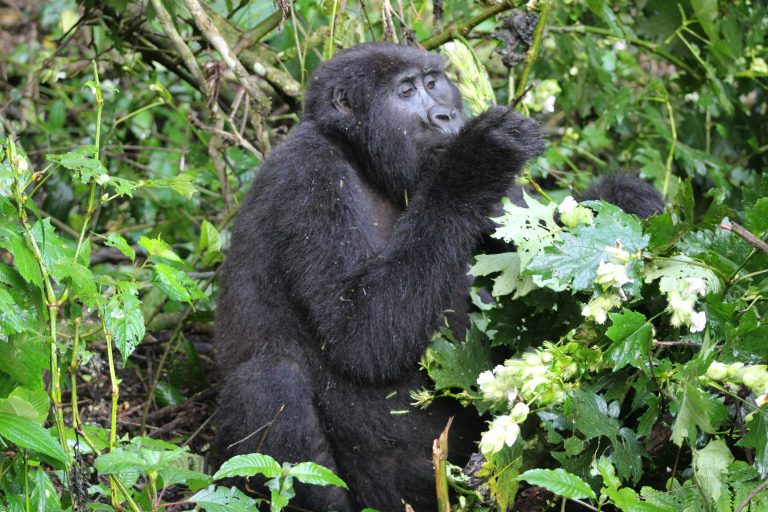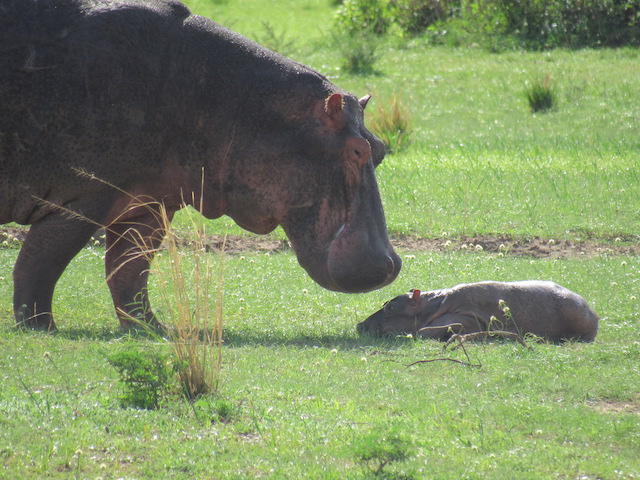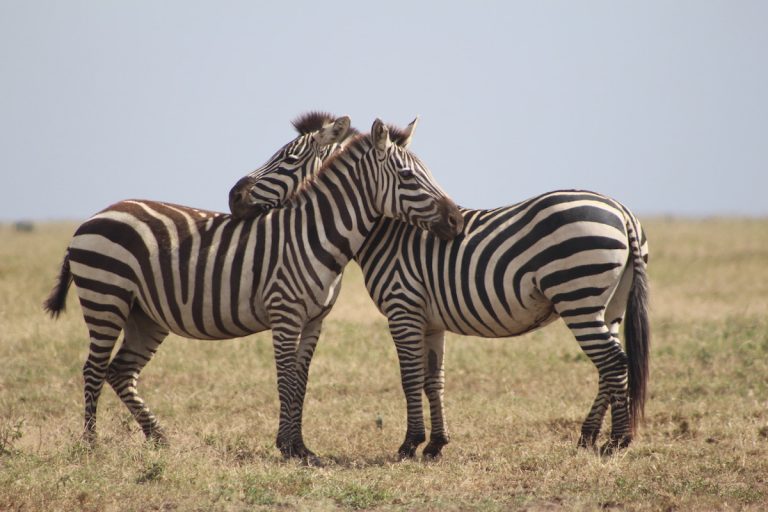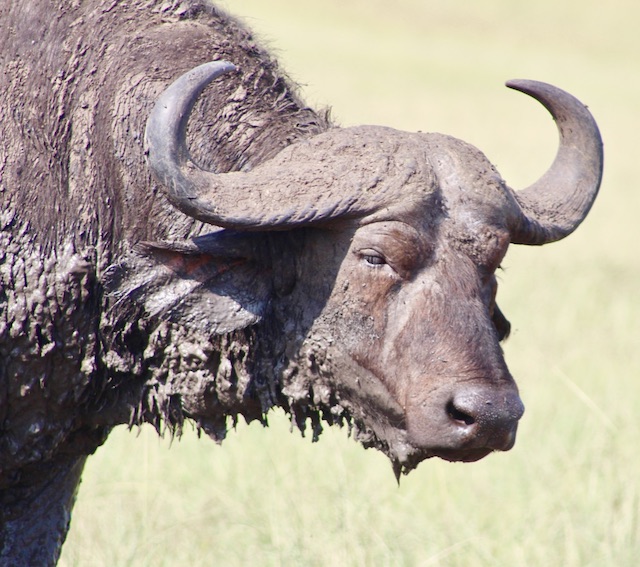Tsavo East National Park is one of Kenya’s most attractive safari destinations located in the south-eastern region of the country. Covering 13,747 square kilometers, Tsavo East is part of the larger Tsavo National Park which is divided into Tsavo East and Tsavo West National Parks. With a combined area of approximately 21,000 square kilometers: making it Kenya’s largest game reserve. The park opened in April 1948 in a semi-arid area previously known as the Taru Desert, near the town of Voi in the Taita-Taveta County of the old Coast Province. Tsavo East National Park is separated from its sister National Park by the A109 road and a railway. Known for its outstanding landscape, the Park derives its name from the Tsavo River.
Tsavo East National Park is a popular safari destination for wildlife enthusiasts and nature lovers. The park is famous for its man-eating lions and savannah grassland which is home to a variety of wildlife. Tsavo became popular in previous years when two mane-less lions attacked construction workers during the construction of the railway that runs through the park. Furthermore, these lions are among the attractions that make the highlight of visiting Tsavo East National Park. The park has a large population of wild creatures including all the African big five and over 500 bird species that can be seen while on a Kenya safari.
Attractions in Tsavo East National Park
Wildlife in Tsavo east National Park
Tsavo East National Park is home to a variety of wildlife, which is dominated by roaming elephants and man-eaters (lions). The elephants are mostly seen grazing along the Galana River. The park also has other members of the big five (lions, leopards, rhinos, and buffaloes). The Park also boasts several other species including a healthy population of grazers which account for over 70% of the total animal population in the Tsavo East National Park. Grazers in the Tsavo East include Kobs, Wildebeests, Gazelles, Topis, Giraffes, Zebras, dik-dik, kudu, oribi, Eland, and Impala among the grazers.
Predators found in the park include; lions, leopards, cheetahs, and Genet cat. Tsavo East National Park is also one of the few national parks in which the last endangered rare African wild dogs can be found. Nonetheless, other predators to look out for include hyenas, foxes, jackals, the soviet cat, etc.
Birds in Tsavo East National Park
Tsavo East National Park is a fantastic birding site and it should be on your list of birding safari destinations in Kenya. The park is home to over 500 bird species: including both resident and migrant species. The park teems with bird species such as Ostriches, starlings, weaver birds, kestrels, buzzards, starlings, kingfishers, hornbills, secretary birds, herons, eastern chanting-goshawk, eurocephalus, slender-tailed nightjar, female eastern paradise, golden pipit, Rufous chatterer, Somali bee-eater, martial eagle, Shelley’s starling, African finfoot, to mention but a few. Migrant species from Europe and Northern America arrive in Tsavo East National Park from November to April.
The Yatta Plateau
The Yatta plateau is one of the most fascinating attractions in Tsavo East National Park and a must-see feature while on a Kenya safari in the park. Stretching over 290 kilometers, the plateau is the world’s longest lava flow, formed as a result of lava that formed the Ol Doinyo Sabuj Mountain during the eruption process. Above the Athi River, the Yatta plateau lies along the western border of Tsavo East National Park.
The plateau was generated by lava from the Ol Doinyo Sabuk Mountain during its eruption phase and is one of the most remarkable aspects of Tsavo East National Park. The Yatta plateau is covered in dense bushland, with stands of Baobab, marshes, seasonal pools, and dams, but few permanent water sources. However, visitors to the plateau can enjoy a variety of activities including game drives around and, on the plateau, walking safaris, camping, bird watching, and hot air balloon safaris.
Tsavo and Galana Rivers
Tsavo East National Park’s spectacular topography is traversed by two rivers: the Galana River and the Tsavo River. These two rivers are important water supplies for the park and its biodiversity. Tsavo River flows through the two Tsavo national parks, Tsavo East and Tsavo West, before joining the Athi River to form the Galana River. The Galana River, on the other hand, originates in the hills of southern Kenya and passes through Tsavo East National Park on its route to the Indian Ocean. The Galana River is teeming with crocodiles, which are fascinating to encounter.
Mudanda Rock
The Mudanda rock in Tsavo East National Park is a 1.6-kilometer-long inselberg of stratified rock that serves as a water catchment area for the natural dam, which sits below it. The rock also serves as a watering facility for animals, particularly during the dry season. Mudanda rock is also a great observation point in the park that many tourists use to view wildlife such as elephants, wildebeest, and buffaloes that come to drink water.
Kanderi swamp
This swamp is one of the water sources supplying Tsavo East National Park’s magnificent ecosystem. Situated along the Voi River, the swamp is one of the park’s stunning tourist attractions and it draws a large number of animals as a water source.
Lugard fall
Lugard falls is one of the spectacular features located in Tsavo East national park and a thrilling feature to visit while on a Kenya safari to the park. Lugard falls is formed in the Galana river and boasts a succession of white-water rapids.
Aruba Dam
Aruba dam is a water reservoir in Tsavo East national park that was erected in 1952 along the Voi River. Thousands of animals congregate at Aruba Dam to drink water, especially during the dry season. Moreso, the dam thrives with a variety of birds that can also be seen while visiting the dam.
Safari Activities in Tsavo East National Park
Game Drives
Tsavo East National Park provides spectacular views of many wildlife species. Game drives in Tsavo are conducted in the early morning when the sun has just risen, in the late afternoon or evening, and at night to catch the nocturnal animals. The park also offers full-day game drives where visitors spend the whole day exploring the stunning Park of Tsavo. On your morning game drive, you may see elephants, waterbucks, impala, spotted hyenas, buffaloes, baboons, warthogs, giraffes, marsh mongoose, and many more species. During a night game drive, you may encounter nocturnal animals such as bush babies, predators such as leopards, and lions hunting for the night.
Bird-watching
Tsavo East is home to over 500 different bird species and it offers birding enthusiasts on Kenya safari thrilling birding excursions. Many dry-country specials are easily visible, such as the spectacular Golden-breasted starling, golden pipit, and Vulturine guinea fowl. The park is also the southernmost bastion for Somali ostriches and an important wintering area for European migrant species from November to April.
Notable bird species in Tsavo East National Park include Somali bunting, Slender-tailed nightjar, Taita falcon, Taita fiscal, Rufous chatterer, Pangani long claw, Northern brownbul, Fischer’s starling, African finfoot, Vulturine Guinea fowl, Somali Ostrich, Somali bee-eater, Red-bellied parrot, Martial eagle, and Black-faced sandgrouse, among others.
Bush breakfasts, Sundowners & Picnics
Enjoying a meal on a Kenya safari is not limited to the dining room at Tsavo East National Park. Tourists can set up breakfast with a view of the Yatta Plateau, or take a break from game viewing with a picnic under a tamarind tree. You can enjoy freshly prepared food and drinks as you watch the coral sun set behind the hills from a magnificent rocky cliff on an African sundowner.
Guided Safari Walks
Tsavo East National Park offers amazing guided safari walks across the park. The walks are a great way to see most of the park’s highlights and reach regions that are not accessible by vehicle. Walking through the park allows you to see many animals as well as magnificent natural elements such as the Galana River and numerous birds nearby.
Cultural Tours
Tsavo East National Park is surrounded by the Maasai people, who have their own distinct traditional culture. The Maasai of Kenya have one of the world’s distinctive cultures, with special dress code and nomadic lifestyle. Visiting the Maasai of Tsavo will expose you to the unique culture and traditions of these indigenous people including their remarkable traditional dance.
Hiking and Rock Climbing
Hiking and rock climbing in Tsavo East National Park is a fantastic experience for nature enthusiasts. The park is dominated by craggy outcrops such as Mudanda rock and the Yatta plateau which are great for hiking and rock climbing.
When is the Time to Visit Tsavo East National Park?
While the incredible Tsavo East National Park can be visited at any time of the year, the dry season remains the best time to visit the Park. The park experiences extended dry spells from June to October, and then again from December to February. During the dry months, the grassland in the park is short, making game viewing easier. This is especially useful for seeing rare leopards and black rhinos. During this time, the park is easily accessible with game viewing trails being dry and passable.
Tsavo East National Park can also be visited during the rainy season and this season has its advantages. For instance, during the rainy season, the animals congregate in one location to graze the green grass. Because water is plentiful, the animals do not venture far from the park to find it. Hence, the game drives are brief but always satisfying. More so, the rainy season is considered the low safari season which comes with low safari prices. Moreover, if you enjoy bird watching, the rainy season is the best time to visit Tsavo East National Park, when the birds are breeding and migratory species are also around.
Getting to Tsavo East National Park
By Road
Tsavo East National Park may be reached by road from Nairobi Capital through the Mombasa Road, which is about 240 kilometers to reach Mtito Adei Gate. Then it is another 290-kilometer journey to Tsavo Gate. It should be noted that road transportation is incredibly gratifying, with the wonderful scenery of landscape and countryside.
By Air
Tsavo East National Park can also be reached by air. You can fly from either Wilson Airport or Nairobi’s Jomo Kenyatta International Airport to one of the park’s airstrips – Voi Airstrip, in less than 40 minutes.
Accommodation in Tsavo East National Park
Tsavo East National Park provides comfortable accommodation for visitors on a Kenya safari to the park. These establishments provide sleeping rooms, beds, and other services to make your stay more comfortable. Accommodations in Tsavo East National Park include;
- Voi Wildlife Lodge
- Kilaguni Serena Safari Lodge
- Ashnil Aruba Lodge
- Severin Safari Camp
- Tsavo Lodge Voi
- Loyk Tsavo Camp
- Satao Tented Camp
- Sentrim Tsavo East
- Sao Tsavo Camp





